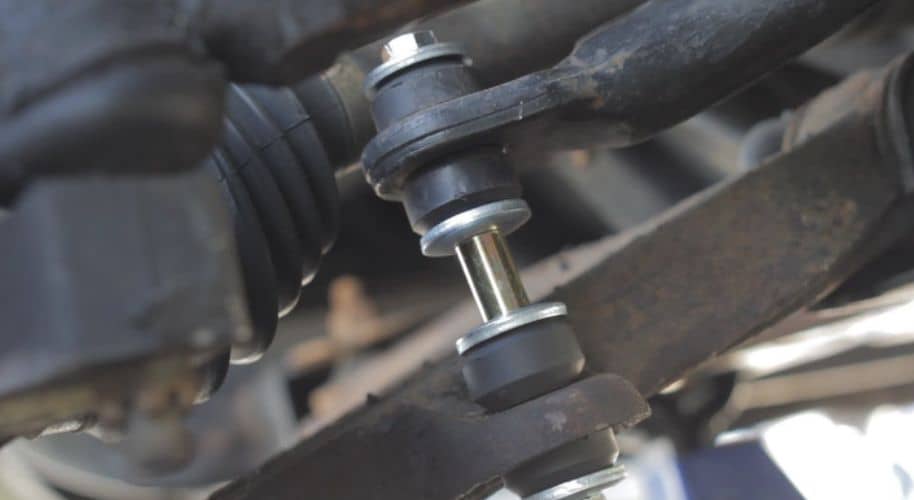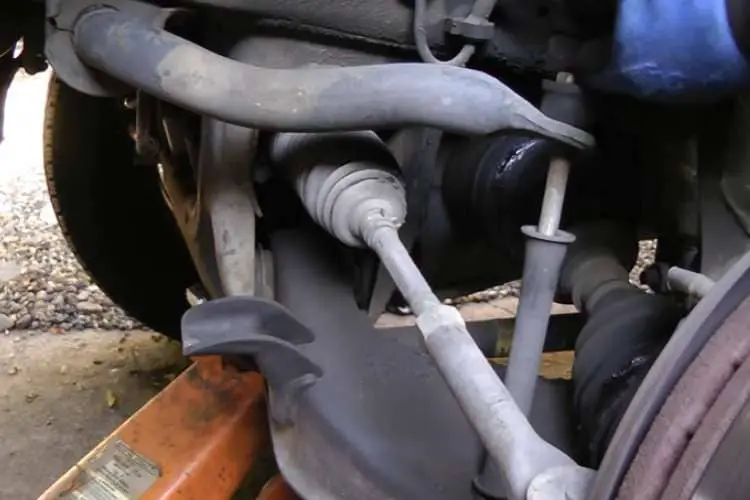Last Updated on June 19, 2023 by Henry T. Hawkins
As a car owner, you may have heard that replacing sway bar links can affect the alignment of your vehicle. However, it can be confusing to determine whether or not you actually need to get an alignment done after this repair.
In this article, we will explore the reasons why sway bar link replacement can impact your alignment and whether or not an alignment is necessary after replacing sway bar links

Do I Need An Alignment After Replacing Sway Bar Links?
Replacing sway bar links does not usually require an alignment, but there are some situations where an alignment may be necessary. Sway bar links are critical components of a car’s suspension system that stabilize the vehicle during turns.
Most of the cars have one sway bar in the front and another separate sway bar in the rear suspension.
A bad sway bar link can cause excessive body roll and leaning when going around turns. Sway bar links do not affect a car’s alignment or tire wear.
How Much Does It Cost to Sway Bar Links?
The cost of replacing sway bar links ranges from $20-$100 per side, with labor costs averaging around $70-$100 per hour. It is important to note that the cost of an alignment after replacing sway bar links varies depending on the severity of the misalignment and the type of vehicle. Still, it typically ranges from $75 to $200.
In general, if the steering rack, tie rods, subframe, or control arm bolts have been altered or the car has been lowered, an alignment is necessary.
However, removing and replacing the sway bar usually does not require an alignment unless something mentioned above has to be moved to access the sway bar.
Also read: Can you put any width tires on same rim
Why do sway bar links go bad?
Sway bar links, also known as stabilizer bar links, are an essential part of a vehicle’s suspension system. Sway bar links hold the sway bar, which prevents body sway.
They connect the sway bar to the control arm and help to stabilize the vehicle while turning. Over time, these links can go bad and cause several problems.
We will explore the most common reasons why sway bar links go bad.
Wear and Tear
Sway bar links experience a lot of wear and tear over time, which can cause them to go bad. The constant stress put on them while driving can lead to worn-out joints, which can cause the links to become loose or even break.
Road Conditions
Driving on rough or uneven roads can also cause sway bar links to go bad. Bumps and potholes can cause the links to become damaged or even break. Additionally, driving on unpaved roads or off-road can put more stress on the links, causing them to wear out faster.
Lack of Maintenance
A lack of maintenance can also contribute to sway bar link failure. Neglecting to inspect or replace worn-out links can lead to more significant problems down the road. Regular inspections and maintenance can help prevent issues with sway bar links.
Low-Quality Parts
Using low-quality sway bar links can also cause them to go bad faster. These parts may be made with cheaper materials or may not fit correctly, causing them to wear out faster. It’s essential to use high-quality parts to ensure the longevity of your vehicle’s suspension system.
Some of the common symptoms of a bad sway bar bushing
A sway bar is an important component of a vehicle’s suspension system that helps stabilize the vehicle’s body and keep it level while turning. A sway bar bushing is a component that helps to secure the sway bar to the vehicle’s chassis.
When these bushings become worn or damaged, it can lead to a range of symptoms that can impact the vehicle’s handling and safety.
Below are some of the common symptoms of bad sway bar bushings:
Clunking noise
One of the most common symptoms of bad sway bar bushings is a clunking noise when going over bumps or turning corners. This noise is usually caused by the sway bar moving around in its mounting brackets due to worn or damaged bushings. The noise may be more pronounced when driving over rough roads or uneven surfaces.
Increased body roll
Another symptom of bad sway bar bushings is increased body roll or leaning of the vehicle during turns. This is because the sway bar helps to stabilize the body of the vehicle and keep it level, and when the bushings are worn or damaged, the body is not held as securely in place. This can cause the vehicle to feel less stable and increase the risk of rollover during sharp turns or sudden maneuvers.
Vibrations while driving
Bad sway bar bushings can also cause vibrations while driving, particularly at higher speeds. This is because the worn or damaged bushings can cause the sway bar to shake, leading to instability of the vehicle. This effect may not be noticeable at lower speeds but can become more pronounced as the vehicle accelerates.
Uneven tire wear
Worn or damaged sway bar bushings can also cause uneven tire wear, particularly on the front tires. This is because the increased body roll caused by bad bushings can lead to changes in the vehicle’s alignment, which can cause the tires to wear unevenly. This can result in reduced traction, decreased fuel efficiency, and increased risk of blowouts or other tire-related issues.
Loose steering
Lastly, bad sway bar bushings can also cause the steering to feel loose or less responsive. This is because the sway bar helps to keep the vehicle’s body level, and when the bushings are worn or damaged, the body is not held as securely in place. This can cause the steering to feel less precise or more difficult to control, increasing the risk of accidents or other safety issues.
Also read: 10 Worst Tire Brands To Avoid In 2023
When to replace sway bar links?

Most of the cars have one sway bar in the front and another separate sway bar in the rear suspension.
Sway bar links should be replaced if they show any wear or damage. Common symptoms of worn sway bar links include clunking or rattling noises while driving over bumps or uneven roads and a loose or unstable feeling while driving. Additionally, if there is excessive play or movement in the sway bar links, they should be replaced.
It’s also important to note that sway bars can have front or front, and rear links, so it’s important to check the service manual to determine the type of sway bar link your vehicle has.
Conclusion:
If you have recently replaced your sway bar links, it is important to consider getting an alignment done to ensure your vehicle is functioning properly. While it may not always be necessary, an alignment can help prevent premature tire wear and ensure that your car is driving smoothly.
As always, it is important to consult with a trusted mechanic or refer to your vehicle’s owner manual for specific recommendations on when to get an alignment after repairs.
By taking care of your vehicle’s suspension system and addressing any alignment issues, you can ensure that your car is safe and enjoyable to drive.

